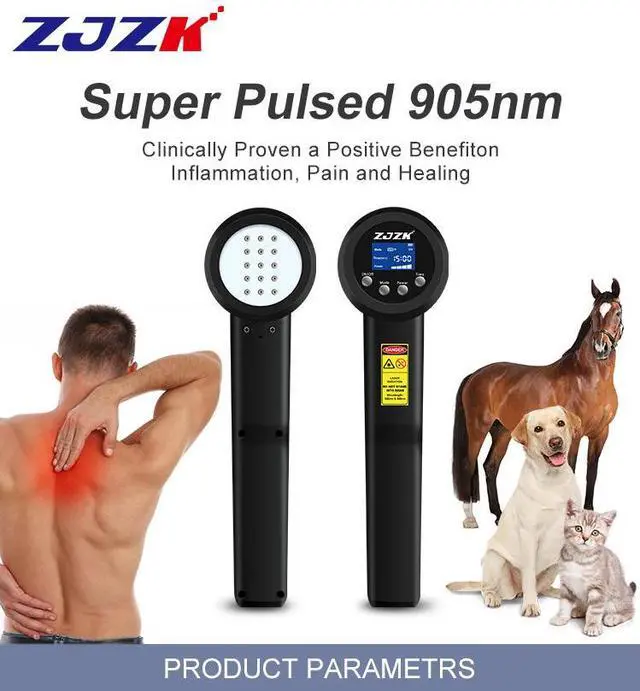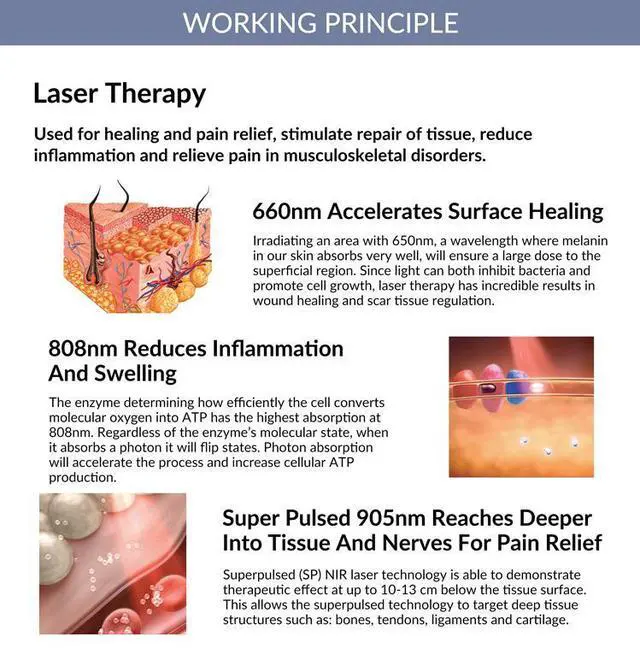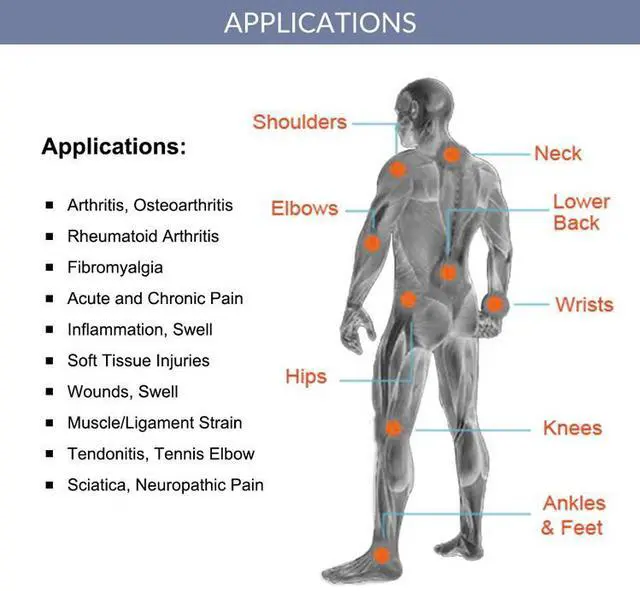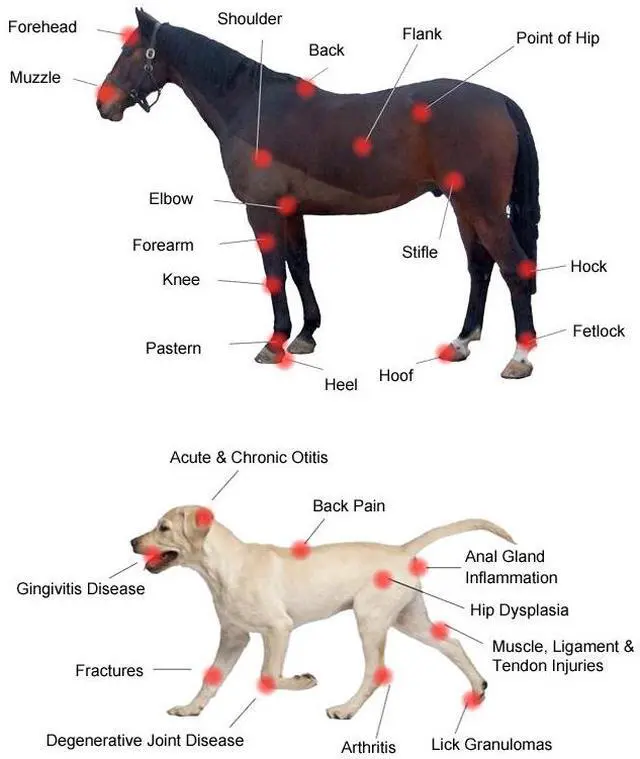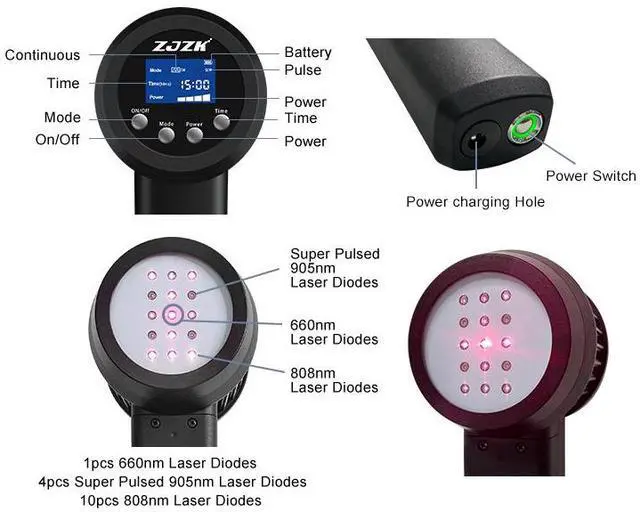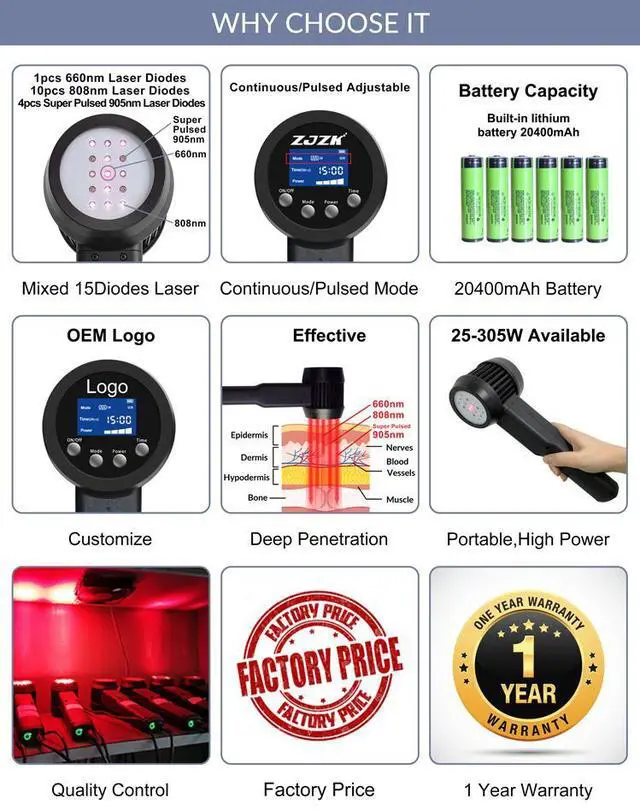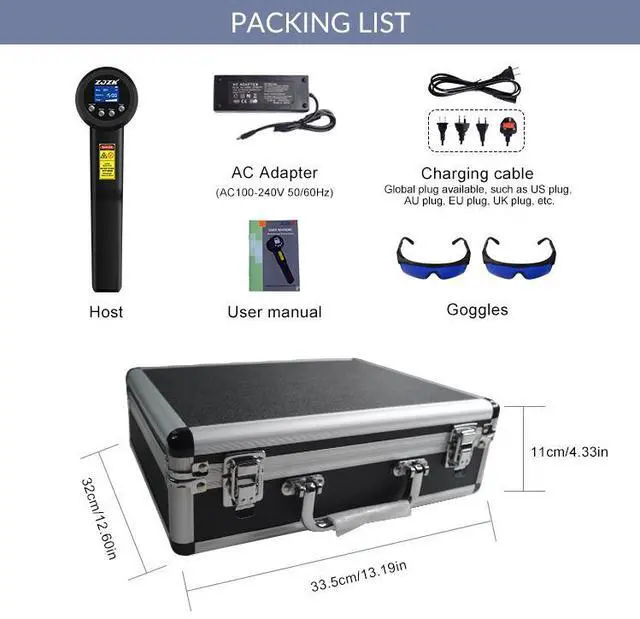
The Ultra-pulse laser therapy device composed of 660*1*200mw+808*10*500mW+super pulsed 905nm*4*75W laser diodes. Total power reaches 305W/305000mW.The clinically proven 808nm infrared light therapy can quickly reduce inflammation, help deep muscle relaxer, and joint pain relief, while the 660nm LLLT therapy is used on the skin surface to help cell repair and regrowth, 905nm laser mainly targets nerve tissue and can effectively treat neuralgia. Red light phototherapy have great curative effect for humans and animals.
What Is Super Pulsed (Low-Level) Laser Therapy?
Cold laser therapy is an example of revolutionary new technology entering the industry. Delivered through a technology called 'super pulsing', these super pulsed lasers deliver safer and more effective laser treatment than traditional methods (such as class IV laser), due to having no thermal output (categorised as class 1).
This new super pulsing technology allows for deeper penetration than that of lasers with the same wavelength and power output. The additional benefits of no heat being produced means the patient is more comfortable, a specialist room or equipment is not needed, and the laser can be held in one spot to deliver maximum treatment.
There is no need to continuously move the laser. In fact, they're so safe that pet owners can use them at home too.

660nm Red Light Laser
Much of energy from red wavelength interacts with melanin (near the surface) and with the hemoglobin in the blood. There is also a reaction with mitochondria. This energy is absorbed close to the surface making it the best option for reducing inflammation, reducing swelling, relieving pain, treating wound ulcers, healing wounds, and promoting blood circulation.
808nm Near Infrared Laser
The wavelength peak around 808/810nm is one of the best wavelength to get a combination of deeper penetration and cellular interaction. Cold laser for pain interact with deep cells mitochondria and they trigger an increase in Cytochrome C Oxidase and Adenosine Triphosphate, 2 key chemicals critical in the PBMT. High intensity therapeutic cold laser can penetrate deep in the tissue layer to relieve pain from deep muscle.
905nm Super Pulsed Laser
905nm reaches deeper into tissue and nerves for pain relief superpulsed (SP) NIR laser technology is able to demonstrate therapeutic effect at up to 10 -13 cm below the tissue surface. This allows the superpulsed technology to target deep tissue structures such as: bones, tendons, ligaments and cartilage.
Note: 808nm 905nm Near Infrared Laser Light is invisible to the human eye.
Super Pulsing allows for deeper penetration than a laser of the same wavelength that is not Super Pulsed but has the same average output power. This is because ultimately short pulses allow for quick absorption. In addition, the period between pulses promotes a better environment for an optimum pain relief.
Super Pulsed infrared Laser penetrates to target tissues up to 10-13cm, and exerts powerful stimulating influences upon blood microcirculation. In general, Laser diodes are either continuous wave or pulsed. The continuous wave diodes emit Laser energy for the entire time they are electrically driven, hence the name. They provide a fixed level of power during emission. Super pulsed diodes emit a series (frequency) of radiation impulses with high amplitude in an extremely short duration (typically 100 to 200 nanoseconds). The mean output of power of a Super Pulsed Laser will increase as the pulse repetition is increased.
Each impulse of the Super Pulsed Laser produces high peak power delivered for a very brief duration. It is the high power level during each pulse that creates the energy density necessary to deliver adequate doses to the target tissue. Even though the pulse peaks at a high power level, there are no thermal effects in the tissue. Therefore, the peak power of a pulsed laser is high compared to its average output power. By using Super Pulsed Lasers, one is able to more effectively deliver higher densities of light energy into the tissue without the associated deleterious thermal effects.


